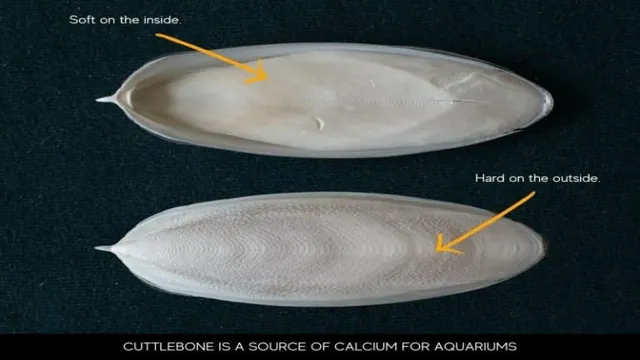How to Maintain pH in Aquarium: Tips and Tricks for a Thriving Tank

Maintaining pH in your aquarium is vital to the health and wellbeing of your aquatic life. pH levels refer to the level of acidity or alkalinity of the water in your aquarium, and it is essential to maintain a consistent level to ensure your fish and plants thrive. But how do you know if your pH levels are balanced? What are the consequences of unbalanced pH levels in your aquarium? And most importantly, how can you maintain a healthy pH level in your aquarium? In this blog, we will cover everything you need to know to maintain the perfect pH level in your aquarium and keep your aquatic pets happy and healthy.
Understanding pH Levels
Maintaining the proper pH level in your aquarium is crucial for the health and wellbeing of your aquatic pets. The pH level measures the acidity or alkalinity of the water, with a range of 0-1 A neutral pH is 7, while anything below 7 is considered acidic and anything above is considered alkaline.
The ideal pH for most aquariums is between 5 and
If the pH is outside of this range, it can stress and harm your fish, leading to illness and even death. To maintain the proper pH level, it’s important to monitor it regularly and make adjustments as needed. You can use pH testing kits or electronic meters to measure the pH level.
If the pH is too high, you can lower it by adding aquarium peat or driftwood. If it’s too low, you can raise it by adding baking soda or crushed coral. By maintaining the proper pH level, you can ensure a healthy and happy environment for your aquatic pets.
What is pH?
pH level Have you ever heard about the term pH level? It is quite common in chemistry and biology. pH is the measure of acidity and alkalinity of a solution. It is measured on a scale of 0 to 14 with 7 being neutral.
Anything below 7 is considered acidic whereas anything above is considered alkaline. The pH level affects various chemical and biological processes, including the growth of plant and animal cells. For instance, plants tend to thrive in slightly acidic soils, whereas the stomach has a strong acid concentration to digest food.
Understanding pH level is crucial for maintaining the balance of various natural systems. Monitoring pH level is essential to prevent any damage to our environment and lives.

Why is pH Important in an Aquarium?
pH levels, aquarium pH levels play a crucial role in keeping an aquarium healthy and thriving. Understanding pH levels in an aquarium can be confusing and overwhelming, but it is essential to achieve proper water quality. pH is a measure of how acidic or alkaline the water is, with a range of 0-1
The ideal pH level for most aquarium species is between 5 to
Anything outside of this range can have negative effects on the fish, plants, and other aquatic life. Low pH levels can cause stress and illness in fish, while high pH levels can lead to mineral deposits, algae growth, and harm to delicate plants. Testing the pH levels regularly and making the necessary adjustments with pH buffers, reverse osmosis water, or driftwood can help maintain a balanced pH level and promote a thriving aquarium environment.
Remember, keeping a steady pH level is crucial in providing your aquarium inhabitants the best possible living conditions.
Ideal pH Range for Your Aquarium
When it comes to maintaining a healthy aquarium, understanding the pH levels is crucial. Aquariums can have a pH range anywhere from 6 to 8, with a neutral pH of 7 being ideal. A pH level that is too high or too low can lead to stress and illness among aquarium inhabitants.
It’s essential to monitor the pH levels regularly using a testing kit, and adjust it if necessary by adding pH adjusting chemicals or natural methods such as adding driftwood or live plants. Think of the pH level as the heartbeat of your aquarium – it needs to be steady to keep everything functioning correctly. By ensuring a healthy pH range, your underwater friends will have a comfortable and thriving environment to call home.
Factors Affecting pH in Your Aquarium
Maintaining pH levels in your aquarium is crucial for the health and well-being of your aquatic pets. Several factors can affect the pH levels of your aquarium, including the type of fish and plants, the water source, and the filtration system. Some fish may prefer a more acidic environment, while others may thrive in alkaline water.
It is essential to research the specific needs of your aquatic pets and adjust the pH level accordingly. The type of water source can also impact the pH level, and it’s essential to test and adjust the pH level accordingly. A well-functioning filtration system can help maintain a stable pH level by removing waste and excess food, which can cause a spike in acidity.
Regularly monitoring and adjusting the pH level in your aquarium can ensure a healthy and thriving environment for your aquatic pets. Remember always to use natural and safe methods for maintaining the pH level and avoid any drastic changes that can stress your fish or plants.
Types of Fish and Their pH Tolerance
When it comes to maintaining a healthy aquarium, one of the most important factors to consider is pH levels. Different types of fish have varying levels of pH tolerance, so it’s crucial to choose fish that can thrive in the pH range of your aquarium. Some fish, such as African cichlids, require higher pH levels between
8 and 6, while others like neon tetras prefer a more neutral pH range of 0 to
0. There are several factors that can affect pH levels in your aquarium, including substrate, decorations, and the type of filtration system being used. It’s essential to regularly test the pH levels in your tank and make adjustments as needed to ensure that your fish remain healthy and happy.
With a bit of research and care, you can create an optimal environment for your fish to flourish and thrive.
Water Hardness and pH
Aquarium pH Maintaining the correct pH level in your aquarium is crucial for the health and well-being of your aquatic pets. A number of different factors can affect the pH level of your aquarium, including the hardness of the water. Water hardness refers to the amount of minerals present in the water, such as calcium and magnesium.
If your water is too hard, it can lead to an increase in pH levels. This is because hard water has a higher alkalinity, which can make it harder to neutralize acids in the water. Additionally, if you have too many fish in your aquarium, it can lead to an increase in pH levels.
This is because fish produce ammonia, which can cause the pH level to rise if not properly filtered out. By monitoring the water hardness and number of fish in your aquarium, you can help ensure that your pH level stays within the optimal range for your aquatic pets.
Substrate and pH
When it comes to maintaining a healthy and thriving aquarium, the pH level is an essential factor to keep in mind. Several things can affect the pH level in your aquarium, including the substrate you use. For example, if you prefer a natural substrate like sand or soil, it could gradually cause the water’s pH level to drop.
Conversely, using materials like gravel or crushed coral can increase the water’s pH, making it more alkaline. The type of fish and plants you keep in your aquarium are also crucial in maintaining the right pH. Certain species of fish and plants require specific pH levels, which is why it’s essential to research before adding them to your aquarium.
You can test the water’s pH level using a test kit and adjust it accordingly. Keep in mind that sudden changes in pH levels can cause stress to your aquatic pets, so gradual adjustments are recommended.
Aquarium Decor and pH
When it comes to aquarium decor, it’s essential to consider how it may affect the pH levels in your fish tank. Various factors can impact the acidity or alkalinity of the water, including the substrate, rocks, and plants you place in the aquarium. For instance, if you have a substrate that releases alkaline compounds, it can increase the pH levels in your tank over time.
Similarly, certain types of rocks and corals can raise pH levels, while others may lower them. It’s crucial to do your research and select decor items that won’t significantly affect the pH levels in your tank. Additionally, it’s best to monitor the pH levels regularly to ensure they remain within a healthy range for your fish and other aquatic creatures.
By being mindful of these factors, you can create a beautiful and healthy environment for your fish to thrive in.
Steps to Maintain Stable pH
Maintaining the pH in an aquarium is essential to the survival of your fish and other aquatic creatures. Understanding the steps to maintain a stable pH level is crucial. Firstly, test the pH levels and make sure they’re within the recommended range for your specific species of fish.
If the pH level is too acidic or alkaline, change the water or add chemicals to balance the pH level. Secondly, invest in a good quality aquarium filter – this will help to keep the water clean and remove contaminants that can affect the pH level. Additionally, avoid overcrowding your aquarium as this can lead to an excess of ammonia and nitrate – both of which can affect the pH balance.
Lastly, monitor the pH levels regularly and make necessary adjustments to ensure that your fish and plants thrive in their aquatic environment. Remember, maintaining a stable pH is essential for the health and well-being of your aquatic pets.
Regular Water Changes
Maintaining a stable pH in your aquarium is crucial for the health and well-being of your aquatic inhabitants. One of the most manageable ways to achieve this is through regular water changes. Water changes are an effective method for improving water quality and reducing the buildup of nitrates and other harmful substances.
When performing water changes, it’s essential to use a pH testing kit to ensure the pH level remains stable. The ideal pH for most freshwater aquariums is between 5 and
If the pH is too high or too low, you can adjust it using specific chemicals or natural additives. Regular water changes also assist in replacing the minerals and nutrients your aquarium inhabitants require to thrive.
These minerals and nutrients can become depleted over time through the natural process of the nitrogen cycle, leaving your fish and plants at risk of developing health issues. Furthermore, water changes reduce the concentration of pollutants and harmful substances, which pose a serious threat to the health of your aquarium’s inhabitants. In conclusion, regular water changes are essential for maintaining a stable pH in your aquarium and ensuring the health and wellbeing of your aquatic inhabitants.
By performing regular water changes and using a pH testing kit, you can achieve ideal water conditions for your fish and plants to thrive. So, when you’re enjoying your aquarium, don’t forget to schedule regular water changes to keep your aquatic pets happy and healthy.
Using pH Adjusting Chemicals
Maintaining a stable pH level in your water source is vital for a healthy and productive aquatic ecosystem. One effective way to achieve and maintain pH stability is by the use of pH adjusting chemicals. However, before diving into the application of these chemicals, it’s important to know the steps involved in maintaining a stable pH level.
Firstly, measure the pH levels of the water source regularly using a pH test kit or meter. Secondly, identify the water source’s alkalinity levels and adjust them accordingly. Thirdly, determine the type of pH adjusting chemical that will be necessary to achieve a stable pH level and add it accordingly.
Fourthly, allow the chemical to disperse evenly and circulate the water source for several hours. Finally, retest the pH levels to ensure that they are within the acceptable range. By following these steps, you can achieve and maintain a stable pH level, keeping your aquatic ecosystem healthy and vibrant.
Testing pH Levels
Maintaining stable pH levels in your home aquarium is crucial for the health and well-being of your aquatic pets. Testing your pH levels regularly is the first step towards achieving stable levels. Start by purchasing a reliable pH testing kit from your local pet store.
Once you have your kit, take a sample of your aquarium water and test it using the included instructions. If your pH levels are too high or too low, make the necessary adjustments using pH-boosting or pH-lowering solutions. Remember to make small adjustments at a time and retest your water to avoid shocking your fish.
Once your pH levels are stabilized, it’s important to maintain them by performing routine water changes and testing your water frequently. This will ensure a healthy and harmonious environment for your fish to thrive in. So, take the time to test and maintain your aquarium’s pH levels – your aquatic pets will thank you!
Avoid Overfeeding and Overstocking
Maintaining a stable pH level is crucial for ensuring the health and well-being of your aquarium’s inhabitants. One major factor that can disrupt pH balance is overfeeding. When fish are given too much food, it can lead to excess waste and increased levels of ammonia and nitrate in the water, which can lower pH levels over time.
To avoid this, make sure to feed your fish only what they can consume within a few minutes and remove any uneaten food. Additionally, overstocking your aquarium can also lead to pH fluctuations. Having too many fish or other organisms in your tank can result in higher levels of waste and a decrease in oxygen levels, leading to a drop in pH.
To prevent overstocking, research the appropriate number of fish to keep in your aquarium based on its size and filtration system. By taking these steps, you can help maintain a stable pH level in your aquarium and promote the health of your aquatic creatures.
Conclusion and Final Advice
Maintaining the perfect pH in your aquarium may seem like a daunting task, but by following a few simple steps, you can keep your aquatic friends swimming happily. Remember to test your water regularly, adjust pH gradually, and provide proper filtration and aeration. Just like a harmonious beat, a balanced pH in your aquarium will keep your fish thriving and your aquarium looking great.
So don’t be a sourpuss and start maintaining your pH today!”
FAQs
What is the ideal pH level for an aquarium?
The ideal pH level for most aquariums is between 7.0 and 8.2.
How can I test the pH level in my aquarium water?
You can use a pH test kit or pH meter to measure the acidity or alkalinity of your aquarium water.
What causes pH fluctuations in an aquarium?
pH fluctuations in an aquarium can be caused by a number of factors such as the build-up of waste and decaying matter, changes in temperature, and the addition of new water.
How can I maintain a stable pH level in my aquarium?
You can maintain a stable pH level in your aquarium by regularly monitoring the water quality, performing partial water changes, using a pH buffer or conditioner, and avoiding overfeeding your fish.
Can a sudden change in pH level harm my fish?
Yes, sudden changes in pH level can be harmful to fish and other aquarium inhabitants. It is important to make gradual changes to the pH level and to monitor the fish for any signs of stress.
Do different types of fish require different pH levels?
Yes, different fish species may have different pH requirements. It is important to research the optimal pH levels for the specific types of fish in your aquarium.
How often should I test the pH level in my aquarium?
You should test the pH level in your aquarium at least once a week to ensure that the water quality is optimal for your fish and other inhabitants.






